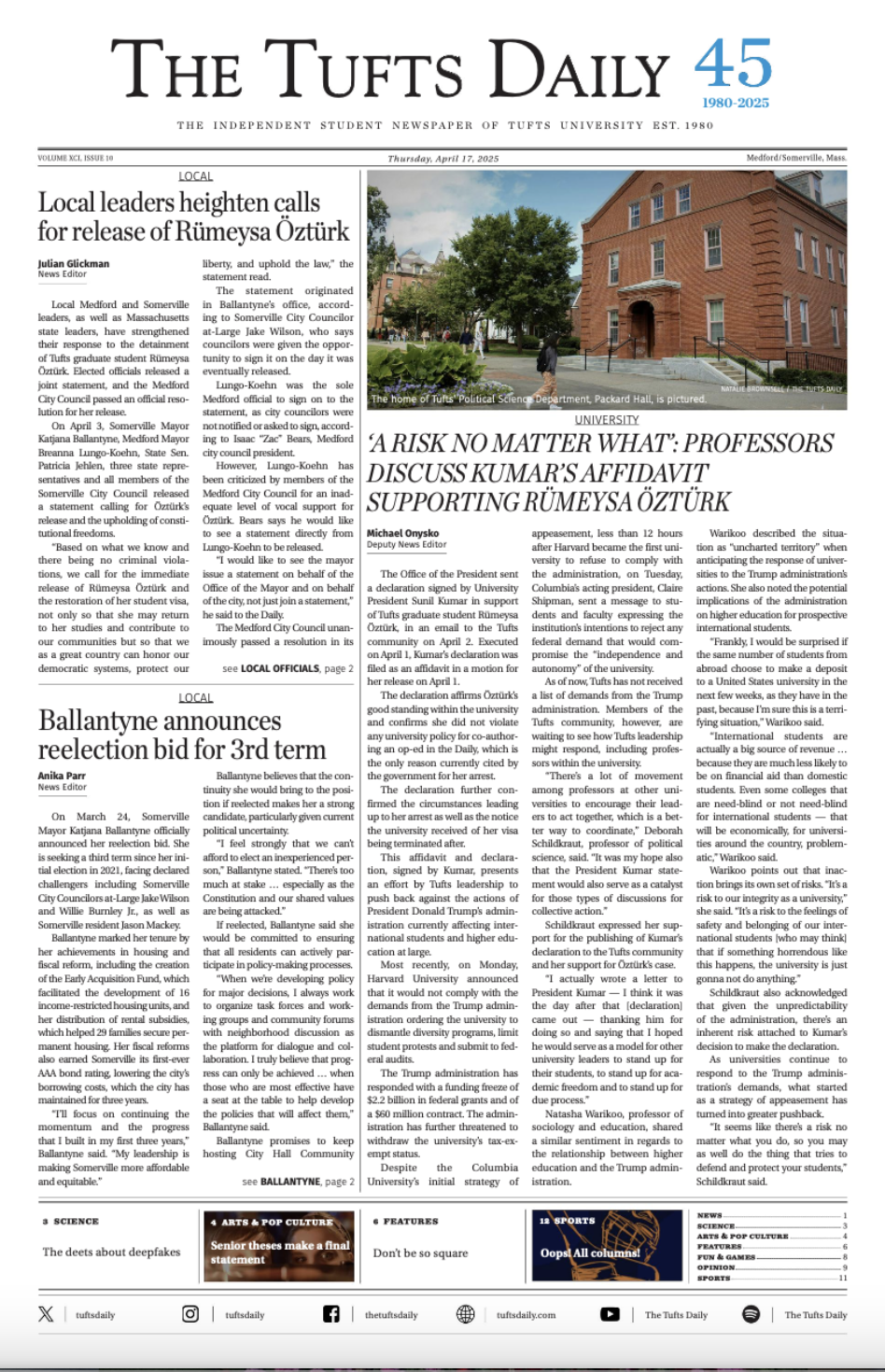Blue Is the Warmest Color" (originally titled "La Vie d'Ad?le") is possibly the best film of 2013. Having won the Palm d'Or at the Cannes Film Festival, it has already achieved remarkable acclaim for its director, Abdellatif Kechiche, and its two lead actresses, Ad?le Exarchopoulos and L?a Seydoux. Its release into mainstream theaters has been highly anticipated and was well worth the wait.
Three hours long and rated NC-17 for graphic sex scenes, "Blue Is the Warmest Color" is a brutally intimate film, sparing absolutely no aspect of its protagonist's emotional or physical life. The film is composed almost entirely of close-up shots of Ad?le (Ad?le Exarchopoulos). Throughout the film, the viewer sees every blemish and stain on her face: splatters of pasta grease left un-wiped on her chin, tear tracks and snot streaking into her mouth and slick strands of hair framing her face. Watching her take a drag from a cigarette, viewers can practically feel the smoke seeping through her teeth as she exhales. The overall effect of this stylistic choice leaves the audience feeling almost like they know Ad?le. Any shot that contains a background or even Ad?le's whole body feels like a deviation - a breath of fresh air from the claustrophobic focus on the film's protagonist. The film accomplishes this in other ways, as well: the sound, the lighting, the acting - everything is tailored to familiarize the audience with Ad?le's life.
Ad?le is a 15-year-old high school student who aspires to become a teacher. One day she passes a blue-haired art student named Emma (L?a Seydoux) and becomes inexplicably enamored with her. From this moment on, the film traces the rise and fall of Ad?le and Emma's relationship. One of the movie's most shocking elements is its graphic depiction of Ad?le and Emma having sex. Nothing is left to the imagination - Ad?le and Emma's first sex scene alone is a nearly 10-minute marathon of contorted limbs, full-on nudity and a medley of pants and moans. Still, even through this, the film maintains its signature proximity to its characters' faces and mouths - one of the most controversial aspects of the film. The inclusion of such explicit scenes has prompted several critics to ask whether this is a legitimate demonstration of the characters' humanity or simply glorified pornography.
In any case, it would be difficult to discount the rest of the film based on these assertions alone - it is simply too well done. The dialogue is natural, understated and always poignant. Indeed, nothing the characters say is trivial or cliched - you won't hear any refrigerator magnet quotations here. Their lines build meaning slowly and subtly from one exchange to another, relying heavily on innuendo and facial expressions.
In this and other ways, the film is effortlessly subtle. Throughout the movie, a series of thematic milestones are introduced through culture, art, philosophy and literature. Classroom scenes depicting literary discussions indirectly mirror the turmoil of Ad?le's life. Yet, the movie never throws these moments in the viewer's face. Instead, it allows them to linger in the background. There are no "a-ha!" sequences





